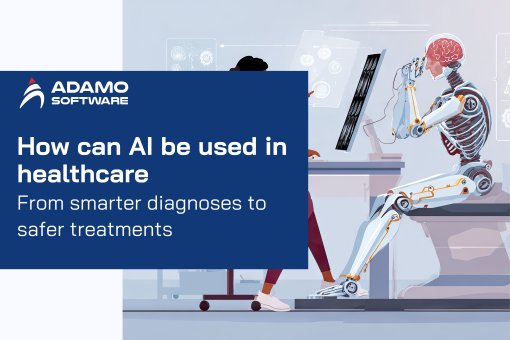Healthcare patient scheduling software: Development cost

Not surprisingly, providers and patients alike want to be efficient in this fast-paced healthcare environment. The healthcare patient scheduling software helps manage appointments, improving the patient’s experience and reducing waiting time.
As 2026 is coming near, healthcare organizations considering investing in technology need to understand the development costs of this software. More providers adopting solutions that enhance operational efficiency, and patient satisfaction is driving the adoption of such solutions. It can really help to know the costs along the way to make intelligent budgeting decisions.
In this article, we will look at the factors affecting healthcare patient scheduling software development costs. We will also discuss key features of this type of software. By the end, you will know clearly what to expect in terms of costs. From there on, you’ll be able to make informed decisions for your organization.
I. Factors affect the cost of developing healthcare patient scheduling software
Many factors can affect the total cost when creating healthcare patient scheduling software. App complexity, design quality, and feature integration are examples of them. Specifically, the following critical elements mainly influence the cost of development:

1. App complexity
The development cost of healthcare patient scheduling software is greatly determined by complexity. Creating an app with advanced features, such as multi-user integration, detailed user pathways, and high-quality graphics, will cost a lot more resources.
In contrast, basic functionality apps develop faster and are much cheaper to complete. However, to provide software that meets user expectations and business goals, it is important to strike the required balance between essential functionality and cost. Hence, planning is important to get the balance right for effective and cost-effective solutions.
2. Compliance with regulations
Healthcare regulations such as HIPAA impact healthcare patient scheduling software development costs. Complying with other standards, such as NSQHS and The Privacy Act 1988, also needs robust security features and extensive testing.
To avoid getting into trouble, businesses must use encryption, secure data storage, and regular audits to protect sensitive patient information. Compliance is indeed more expensive, but it will help companies avoid legal issues and gain trust from users. Having regulatory adherence for the app is important as it increases reliability and marketability, which are two key factors to the app’s long-term success.
3. Custom Features
The cost of developing healthcare patient scheduling software heavily depends on custom features. Things like telehealth integration, automated patient reminders, and advanced analytics all need extra resources and development time.
Although these features add costs, they provide great benefits, including better user satisfaction and competitive advantage. Additionally, the software is tailored to meet specific needs, aligning with patients’ expectations. The long-term benefits are improved patient outcomes and increased value received from the software.
4. Integration with EHR
Seamless data management between healthcare patient scheduling software and electronic health records (EHR) is essential. This integration ensures that the patient’s information is not incorrect and out of date. Nevertheless, development costs are high.
Developers must ensure their system is compatible with many requirements, such as secure data transfer protocols and rigorous testing. These oversees take care of data integrity and confidentiality. Though EHR integration increases healthcare patient scheduling software development costs, it makes it more valuable. If you invest in it, it will simplify your operations and enhance patient care.
5. Scalability requirements
To keep up with the growing number of users and data requirements, healthcare patient scheduling software must be scalable. Increased development costs will ensure the software can scale up and be prepared for future demands.
Cloud services, scalable databases, and load balancing must all be designed by the developers with scalability in mind. Although these features will add to the initial costs, they will lower the costs of upgrades and downtime. It must be scalable properly for patients and healthcare providers, so the app remains reliable and efficient when it grows and stays smooth.
6. UI design
Scheduling healthcare patients with software requires a good enough user interface (UI). It enables the user to enter data easily into your application.
With professional UI design, costs increase, but long-term benefits will follow. A good, appealing, and functional UI keeps the user coming back and stops the user from getting frustrated. Usability and aesthetics are balanced to fulfill the needs of the patient and provider. That is why UI design is a very important part of creating good healthcare patient scheduling software.
7. Location of the development team
The cost of healthcare patient scheduling software greatly depends upon the location of the development team. Rapidly developing regions like the US, Europe, and Australia charge higher rates than Asian countries.
Outsourcing to trusted developers in regions like India can be useful for cost-effective solutions. They provide robust development services at optimized costs per market and regulatory needs.
For your reference, below is a comparison of average hourly rates:
Asia Pacific:
- UAE: $60–$65
- Australia: $70–$90
- Asia: $25–$40
US: $95–$100
Europe:
- Western Europe: $80–$90
- Eastern Europe: $50–$55
II. Essential features of scheduling software for healthcare

1. Appointment scheduling and management tools
The primary purpose of healthcare patient scheduling software is to schedule appointments for patients. The typical version of this software has an easy-to-use graphical interface that will clearly show available time slots. It allows doctors and staff to schedule appointments quickly and accurately and keep track of patient visits.
Patients can also book online through such systems. It is a self-service feature where the patient can check doctor availability. They can simply book, reschedule, or cancel an appointment with the software.
The fact that it is so convenient is a plus for the user’s satisfaction. It streamlines the process for patients and providers to schedule each other. The end result is better clinic efficiency and improved patient experiences, as effective appointment management does.
2. EHR integration
Healthcare patient scheduling software should seamlessly integrate with electronic health record systems (EHR), an important part of the software. This integration removes the burden of scheduling for practitioners by giving them direct access to pertinent patient data and medical history in the software.
Doctors do not have to switch between different applications to bring up important patient information. It saves time and helps to keep away the frustration when the clinic is busy.
This integration is more than just good; it helps boost efficiency. Additionally, it eliminates the errors of manual data entry that can lead to subpar patient care and outcomes.
3. Automated notifications and reminders
Notifications are also automated, a key feature that enhances service quality and reduces no-show rates in healthcare settings. Healthcare patient scheduling software can alert patients through email, SMS, and phone calls upon upcoming appointments.
These notifications remind the patients that they have a visit schedule. For example, they can include medication reminders or pre-appointment instructions to help patients prepare.
This feature helps smoother clinic operations by keeping patients well-prepared for their visits. Overall, it helps increase patient adherence to treatment plans and, by doing so, improves the results of the treatments.
4. Multi-user access with role-based permissions
Security in multi-user access is provided by healthcare patient scheduling software based on user roles set up in the organization. For example, administrative staff can create appointments, whereas only medical professionals can approve them.
One of how this type of access achieves better security by preventing unauthorized access to patient data is through role-based access. This allows every team member to have the tools they need to do their specific tasks in a way that isn’t overly complicated.
Streamlining the workflow in this way allows healthcare facilities to continue with high data protection standards but build collaboration across staff members.
5. Data analysis and reporting features
Advanced healthcare patient scheduling software is often equipped with powerful tools for analyzing appointment data for booking trends, cancellations, and patient attendance rates. These insights are crucial to clinics trying to streamline their workflow and increase the efficiency of operations.
Healthcare providers can then know when staff are needed and when resources are required. By knowing patterns in appointment bookings, healthcare providers can make informed decisions about staffing needs and resource allocation. It, therefore, results in better clinic operations management.
However, custom healthcare patient scheduling software may be a smart alternative if prebuilt solutions cannot provide comprehensive analytics capabilities. Adding custom tools, such as color-coded reports, can simplify data interpretation and improve decision-making in practice.
6. Doctor profiles
Healthcare patient scheduling software must include doctor profiles, which help patients know about their healthcare providers and make appointments accordingly. Also, these profiles usually feature qualifications, specialties, experience, patient ratings, or reviews.
This information can be offered up front to patients so they can better choose who to select for their health care providers. It fosters trust between patients and providers thanks to this transparency.
While adding this feature comes with an added cost to development, it creates a foundation of trust. This, in turn, increases user engagement over time. Patients who perceive greater control in their healthcare choice experiences are more likely to have more positive experiences. Hence, they’ll achieve a higher level of satisfaction overall from their healthcare services.
7. Telehealth consultations
Telehealth capabilities are a big piece to adding to healthcare patient scheduling software where patients and providers can connect remotely for consultations. Access for patients who either travel a long distance or have mobility issues is expanded with this feature.
Telehealth functionality allows patients to get timely care from the comfort of their homes while still being provided with professional medical advice.
While developing telehealth features may increase development expenses, they make things much more convenient for patients and providers. Any comprehensive scheduling tool in modern healthcare delivery needs to include this feature as remote care becomes increasingly important.
8. Ratings and reviews
In helping make the healthcare patient scheduling software user-friendly, user ratings and reviews are important for providing valuable feedback. This feedback will build trust between patients and healthcare providers.
The feature also empowers patients to connect with others and share their experiences so prospective patients can make well-informed decisions based on actual experiences. Positive reviews would boost a provider’s reputation, and constructive criticism would help to improve the services a provider can offer.
This functionality not only improves user engagement but also introduces great value to the software. It creates a transparent environment where feedback is sought and utilized for the best service delivery.
You can explore more about Hospital Management Systems: Types, Key Features & Must-Know Insights here.
III. How does a patient scheduling software for healthcare make monetization?
Healthcare patient scheduling software generates revenue through many streams, including revenue from patients and healthcare providers. Let’s explore some of the monetization models used by this software:
Subscription fees
The patient scheduling software is used by healthcare providers who pay a regular subscription fee. Most often, this fee is included to cover basic features like appointment scheduling, patient management tools, and friendly customer support. By subscribing, providers get an easy-to-use interface, which makes their business easy to manage. They can arrange appointments better and reduce no-shows, which will enhance overall patient satisfaction.
Booking fees
Moreover, each patient appointment booked through the healthcare patient scheduling software is charged a small booking fee as part of the subscription fees. The fee is usually small but can quickly add up if more appointments are made. This gives the software a nice, easy way to make revenue while ensuring patients have a smooth booking experience. This model facilitates the frequent use of the platform by both patients and providers.
Premium features
Healthcare providers can purchase premium features offered by the patient scheduling software at an extra cost. These premium features may involve advanced analytics that allow providers to keep track of appointment trends, such as patient behaviors. This package can also include enhanced patient engagement tools—reminders and follow-ups—so that providers can more effectively communicate with patients. Such an offer provides more sophisticated solutions to providers interested in advanced services to enhance their practice.
Advertising
You can also make money with the advertising space in the app itself for the healthcare patient scheduling software. It can be related to advertising of healthcare products or services relative to users. By working with companies that offer related services, the software can give users valuable information while giving this company an additional source of revenue. This model is good for the software provided and helps users get insights about the product that could improve their healthcare experience.
IV. Why Adamo Software is the best option for developing healthcare patient scheduling software

Adamo Software is a great choice for building healthcare patient scheduling software, with our wide industry experience. We’re all about creating custom healthcare solutions that fit exactly what you need! We know patient scheduling inside out and have software that fits in seamlessly with existing systems.
Staff and patients will find user-friendly interfaces for Adamo’s healthcare patient scheduling software that simplify the scheduling process. Our solutions further include automated reminders to reduce no-shows and improve appointment management. Moreover, the security of the patient’s data is our priority, so the information always remains safe.
Ready to change the way your scheduling processes work? Contact us today to start your healthcare patient scheduling software project!
FAQs
1. What is the estimated cost of creating a healthcare patient scheduling system?
Like any other software, the cost of developing healthcare patient scheduling software will depend on the features, style, integrations, and customization. Development costs can range from around $45,000 to as much as $300,000.
A number of elements closely influence the overall expenses. There may be a need for an additional resource to adhere to the healthcare regulations. The complexity of the application is another factor that influences the costs. As naturally, the more complex the application, the higher the cost.
However, another layer of complexity and cost comes from integrating electronic health records (EHR) systems. The final price depends on custom features that suit particular needs. As such, before you budget for your project, you need to consider all these factors seriously.
2. What steps are involved in creating a healthcare patient scheduling system?
In order to successfully develop your healthcare patient scheduling software, you should follow an organized step-by-step method.
The first step is to start with initial development or planning. This phase is when you do the work of defining the purpose of the software and locating the target users.
Second, UX/UI design has to be the next focus to make the interface as intuitive as possible for a better user experience. Then, move on to the technical development phase, where coding and software architecture are done.
The next step of critical importance is integration with EHR systems so that your software can easily access important patient data. Once developed, they need to be rigorously tested to find and resolve any issues before they are ready to launch.
Once everything is in its place and tested to the highest level, you can launch the software.
Small tip: Working with a good healthcare app development company can make this process much easier and more efficient in every single stage.
3. What is the typical timeline for developing healthcare patient scheduling software?
Typically, the development timeline of healthcare patient scheduling software is 4 to 9 months. These stages include planning, design, development, testing, and deployment and fall into this time period.
The project’s duration is mostly determined by the intricacy of the application being developed. Additional time may be necessary for thorough testing and refinement and for more complex systems.
Secondly, the development team’s expertise also greatly influences the progress of the project. A skilled team can help you navigate the challenges quickly while still keeping the same quality standards in place.











